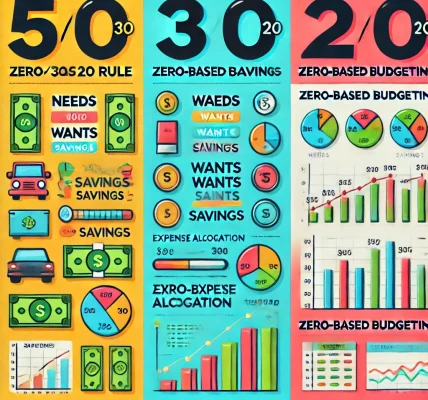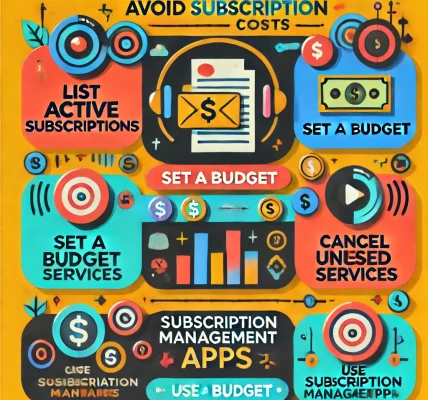Managing your finances is a delicate balancing act—especially when it comes to handling debt and making investments. Both are crucial to your financial health, but prioritizing one over the other can impact your long-term goals. Understanding how to budget effectively for both simultaneously can help you grow wealth while maintaining financial stability. This guide will provide you with actionable, legally sound strategies to strike the right balance between paying off debt and investing for your future.
Why Balancing Debt and Investments is Crucial
Many individuals face the dilemma of whether to focus on paying off debt or investing their money. Both paths have their benefits and risks, and a balanced approach can provide the best of both worlds:
Benefits of Paying Off Debt
- Reduced Financial Stress: Eliminating debt can provide peace of mind and improve your cash flow.
- Lower Interest Payments: Paying down debt reduces the total interest you owe over time.
- Improved Credit Score: Timely debt repayment boosts your credit rating, enhancing future borrowing potential.
Benefits of Investing
- Wealth Growth: Investing in assets like stocks, bonds, and real estate can generate long-term returns.
- Compound Interest: Investments can grow exponentially over time through the power of compounding.
- Financial Independence: Investments can eventually replace or supplement your income, providing greater financial freedom.
Step 1: Evaluate Your Financial Situation
Before creating a balanced plan, assess your current financial position:
- List All Debts: Include credit cards, student loans, mortgages, and other liabilities.
- Understand Interest Rates: Prioritize high-interest debts (e.g., credit cards) over low-interest ones (e.g., mortgages).
- Calculate Investment Potential: Review your current savings, employer-sponsored plans (401k, IRA), and other investment vehicles.
Categorize Your Debts
- High-Interest Debt: Credit cards, payday loans (interest rate: 15% and above).
- Moderate-Interest Debt: Personal loans, auto loans (5% – 15%).
- Low-Interest Debt: Mortgages, student loans (<5%).
Step 2: Prioritize Debt and Investment Based on Interest Rates
A general rule of thumb:
- Pay off high-interest debt first (anything above 7-8% interest).
- Invest alongside low-interest debt repayment (below 5% interest).
Why This Works:
If your debt interest rate exceeds the average investment return (typically 7-10% annually in the stock market), prioritize paying off debt. Conversely, if your debt carries a low-interest rate, invest simultaneously to benefit from compound growth.
Step 3: Create a Balanced Budget
3.1 Follow the 50/30/20 Rule
- 50% Needs: Essential expenses (rent, utilities, minimum debt payments).
- 30% Wants: Non-essentials (entertainment, dining out).
- 20% Financial Goals: Split between extra debt repayments and investments.
3.2 Use the Debt-Investment Ratio
A common approach is to allocate:
- 60% toward high-interest debt
- 40% toward investments
Adjust the ratio based on your financial goals and debt burden.
Step 4: Optimize Debt Payments
4.1 Prioritize Using the Avalanche or Snowball Method
- Avalanche Method: Pay off the highest-interest debts first.
- Snowball Method: Pay off the smallest debts first for psychological wins.
4.2 Consider Debt Consolidation
If you have multiple high-interest debts, consolidating them into a single loan with a lower interest rate can save money and simplify payments.
Step 5: Maximize Investment Contributions
5.1 Employer-Sponsored Retirement Plans
- Maximize Employer Match: Always contribute enough to get the full employer match—it’s free money.
- 401(k) and IRA Contributions: Aim to contribute up to the annual limit ($23,000 for 401(k) in 2024).
5.2 Use Tax-Advantaged Accounts
Contribute to accounts like Roth IRAs or Health Savings Accounts (HSAs) for long-term, tax-free growth.
5.3 Automate Your Investments
Set up automatic monthly contributions to your investment accounts to ensure consistent growth.
Step 6: Build an Emergency Fund
Maintaining an emergency fund prevents new debt from accumulating during financial setbacks. Aim for 3-6 months of living expenses in a liquid, accessible account.
Step 7: Evaluate Opportunity Costs
Always consider what you lose by choosing one financial path over another:
- If your debt interest exceeds expected investment returns, prioritize debt.
- If investments offer better returns than your debt costs, prioritize investing.
Step 8: Review and Adjust Regularly
Financial situations change over time. Review your budget every 6-12 months to adjust your debt repayment and investment contributions.
Common Mistakes to Avoid
- Ignoring High-Interest Debt: It can snowball quickly and undermine investment gains.
- Overlooking Retirement Savings: Delaying contributions reduces the power of compound growth.
- Neglecting Emergency Funds: Without a financial buffer, emergencies can lead to more debt.
- Focusing Solely on Debt: Missing out on market growth can delay long-term wealth-building.
Final Thoughts
Balancing debt repayment and investments requires careful planning and discipline. By evaluating your financial situation, prioritizing high-interest debt, and consistently investing, you can simultaneously reduce financial burdens while building long-term wealth. Start small, stay consistent, and regularly revisit your strategy to ensure financial success for years to come.




